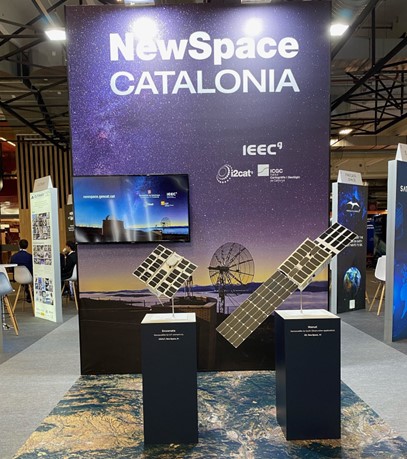
October 7th, 2022
Mr. Daniel Marco Parraga, Director General of Innovation and Digital Economy, Government of Catalonia and Keynote speaker of the 12th EASN International Conference outlines in the following article the Catalunya government strategy on space industry development.
NewSpace is a new use of space, a new technology, a new range of services and as a result, a new economy based on the democratisation of space and the aerospace industry. This represents a paradigm shift in the way space missions take place, and will encourage many more agents to use their services, in both vertical and broad-based applications in various productive sectors such as agriculture, environment, renewable energies, mobility and logistics, security and emergencies, smart cities and many more.
Europe is in an ideal time to make a firm commitment to the NewSpace sector; and develop a new market and a new technological network that will have a pull effect and bring together other technologies, such as 3D printing, artificial intelligence, advanced electronics for sensors and computers, secure communication, and new-generation mobile communications (5G and IoT, among others).
The promotion of NewSpace is a priority for the Government of Catalonia, which aims to support the deployment of this new space economy in order to make Catalonia a pole of innovation, leadership and attraction for talent and companies in the field of this growing sector, while at the same time encouraging its adoption by various industrial sectors and public institutions that make up our social and productive fabric.
The NewSpace Strategy for Catalonia was approved in October 2020 to take advantage of the maturity of the Catalan space ecosystem. With the support of the Institute of Space Studies of Catalonia, IEEC (R+D+I center on space science and technology), the i2CAT Foundation (R+D+I center on advanced digital technologies) and the Cartographic and Geological Institute of Catalonia, ICGC (Government entity on geodesy, cartography and spatial data infrastructure of Catalonia), the strategy addresses six main pillars: ecosystem promotion, international cooperation, research and innovation focused on transference, the launch of space nanosatellites and ground infrastructures, space data services and talent and innovation programmes.
In this context, Catalonia has the infrastructure, know-how and technological background to become a relevant player in the NewSpace field, with substantial experience in research and innovation both in the upstream and downstream, mission launches, payload design, ground facilities, space telecommunications and a first-class digital ecosystem: 3D printing, AI, advanced electronics for sensors and computers, secure communications, and new-generation mobile communications (5G and IoT, among others). Moreover, the Catalan space sector turnover consited of €807 million in 2020 and a workforce of 7.571. And the New Space sector will multiply its turnover and employment fourfold in the next five years, according to "The NewSpace sector ecosystem in Catalonia report", 2020 (Cambra de Barcelona).
"Enxaneta" and "Menut" are the two first missions launched under that Catalan NewSpace strategy. Enxaneta is the first nanosatellite in the world to test ground-to-space communications through 5G-IoT Technology that delivers IoT coverage to rural and remote areas of Catalunya allowing communications and data collection of sensors located throughout the territory and Menut is one of the two first earth observation nanosatellites that will be part of the OpenConstellation a global, shared satellite infrastructure to enable anyone to access satellite data to address challenges around the climate crisis, energy, natural resources and more.
